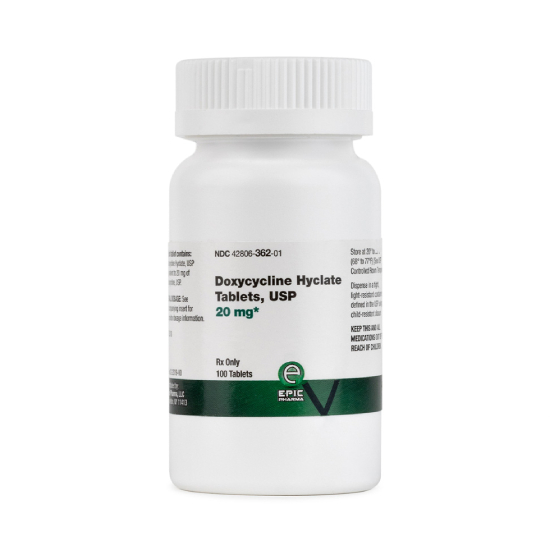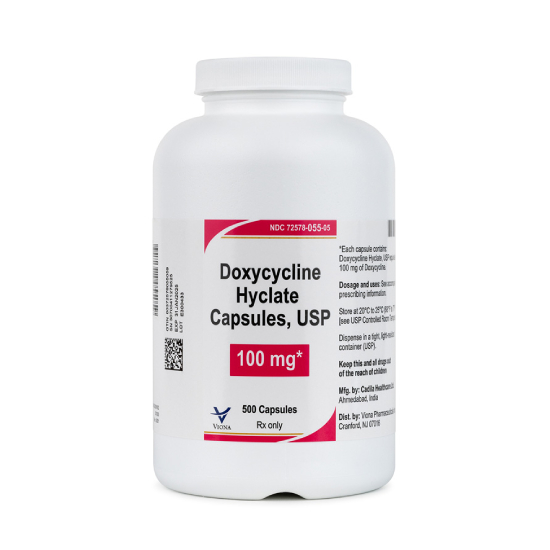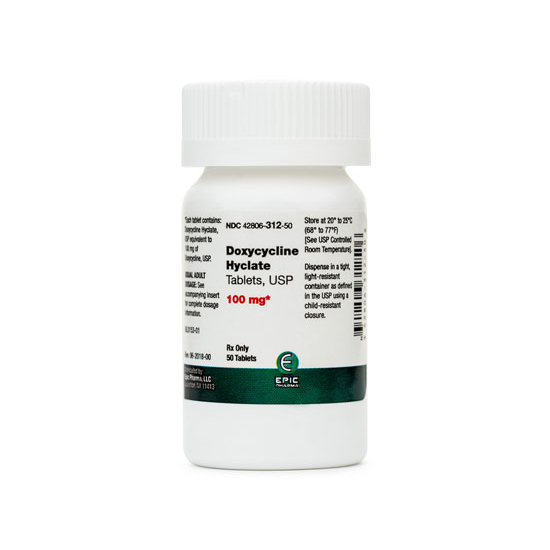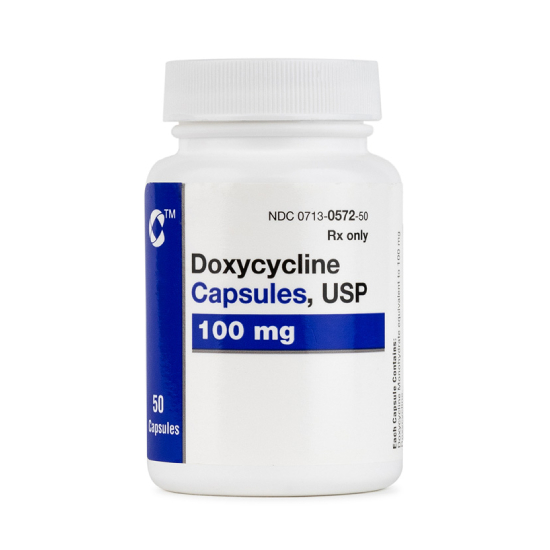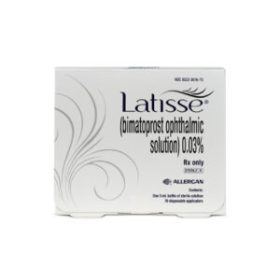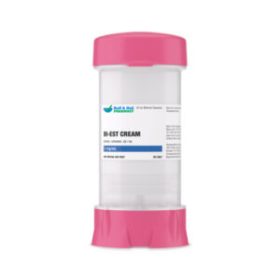This product is available solely through our 503A Compounding Pharmacy, ensuring personalized care and precision in every order. Please note that a valid prescription is required for purchase. If you do not have an account, please contact us.
Doxycycline Hyclate Tablet (Each) †
Doxycycline Hyclate Capsule (Each) †
Doxycycline Monohydrate Capsule (Each) †
† commercial product
It belongs to a group of medicines called tetracyclines and has been used for many years because of its effectiveness. It’s often prescribed for conditions like respiratory infections, skin problems such as acne, urinary tract infections, and certain sexually transmitted diseases. Doxycycline can also be used to prevent malaria when traveling to regions where it’s a risk. It’s available in tablet form, making it easy to take with or without food, although it’s best to follow your doctor’s instructions.
Doxycycline works by stopping bacteria from multiplying. It does this by interfering with the bacteria’s ability to produce proteins that are essential for their growth and survival. Without these proteins, the bacteria can’t spread or infect other areas of the body. This action helps the immune system get ahead in fighting the infection, leading to faster recovery. Because it targets specific bacterial processes, it doesn’t directly kill bacteria but prevents them from thriving.
Doxycycline is not suitable for everyone. People who are allergic to tetracycline antibiotics or any ingredients in the tablet should avoid using it. It’s also not recommended for children under 8 years old, as it may affect bone and tooth development. Individuals with liver or kidney issues, as well as those who are taking certain medications that affect the immune system, should consult their doctor before use. Prolonged use can increase the risk of developing resistant bacterial infections, so it’s important to follow the prescribed course carefully.
Most people tolerate doxycycline well, but some may experience mild side effects like nausea, diarrhea, or a metallic taste in the mouth. Others may notice sensitivity to sunlight, leading to easier sunburns, so it’s important to use sunscreen or protective clothing. Rare but more serious side effects include severe headaches, vision changes, or signs of an allergic reaction such as rash, swelling, or difficulty breathing. If these occur, seek medical attention right away. Drinking plenty of fluids and eating a balanced diet can help reduce some of the milder side effects.
Doxycycline is generally not recommended during pregnancy, especially in the second and third trimesters, as it may affect the development of bones and teeth in the growing baby. It can also pass into breast milk and may cause side effects in nursing infants, so breastfeeding mothers are advised to avoid it or discuss safer alternatives with their doctor.
Store this medication at 68°F to 77°F (20°C to 25°C) and away from heat, moisture and light. Keep all medicine out of the reach of children. Throw away any unused medicine after the beyond use date. Do not flush unused medications or pour down a sink or drain.
- Subramanian Swaminathan GI, Arora S, Mehta S, Mittal R, Mane A, Charugulla SN. Susceptibility Pattern of Doxycycline in Comparison to Azithromycin, Cefuroxime and Amoxicillin against Common Isolates: A Retrospective Study Based on Diagnostic Laboratory Data. Journal of The Association of Physicians of India. 2020; 68: 59-63.
- Ziegler T, Winkler C, Wege K, Schmechel H. Doxycycline-The forgotten antibiotic. Med Klin 2000; 95: 629-631.
- Zhanel GG, Homenuik K, Nichol K, Noreddin A, Vercaigne L, Embil J, et al. The glycylcyclines: A comparative review with the tetracyclines. Drugs 2004;64:63-88.
- Tristram S, Jacobs MR, Appelbaum PC. Antimicrobial resistance in Haemophilus influenzae. Clinical microbiology reviews. 2007;20:368-389.
- Chambers HF, DeLeo FR. Waves of resistance: Staphylococcus aureus in the antibiotic era. Nature Reviews Microbiology. 2009;7:629-641.
- Bhambri S, Kim G. Use of Oral Doxycycline for Community-acquired Methicillin-resistant Staphylococcus aureus (CA-MRSA) infections. The Journal of clinical and aesthetic dermatology. 2009;2:45–50.
- Zhanel GG, Palatnick L, Nichol KA, Low DE, Hoban DJ, CROSS Study Group. Antimicrobial resistance in Haemophilus influenzae and Moraxella catarrhalis respiratory tract isolates: results of the Canadian Respiratory Organism Susceptibility Study, 1997 to 2002. Antimicrobial agents and chemotherapy. 2003;47:1875-1881.
- Bandet T, Whitehead S, Blondel-Hill E, Wagner K, Cheeptham N. Susceptibility of clinical Moraxella catarrhalis isolates in British Columbia to six empirically prescribed antibiotic agents. Canadian Journal of Infectious Diseases and Medical Microbiology. 2014;25:155–158.
- Falagas ME, Vardakas KZ, Kapaskelis A, Triarides NA, Roussos NS. Tetracyclines for multidrug-resistant Acinetobacter baumannii infections. Int J Antimicrob Agents 2015; 45:455-460.
- Wood GC, Underwood EL, Croce MA, Swanson JM, Fabian TC. Treatment of recurrent Stenotrophomonas maltophilia ventilator-associated pneumonia with doxycycline and aerosolized colistin. Ann Pharmacother 2010; 44:1665-1668.
- National Institutes of Health. LiverTox: clinical and research information on drug-induced liver injury. Nih. gov https://livertox.– LinkOpens in New Tab nih. gov. 2017. Available from: https://www.ncbi.nlm.nih.gov/books/NBK548353/– LinkOpens in New Tab [accessed August 21, 2020].
- Holmes NE, Charles PG. Safety and efficacy review of doxycycline. Clinical Medicine. Therapeutics. 2009;1:471–482.
- U.S., Food and Drug Administration, Department of Health and Human Services, Center for Devices and Radiological Health. 2008. Title 21—Food and Drugs, Chapter I—Subchapter D—Drugs for Human Use—Part 320—Bioavailability and Bioequivalence Requirements. Available from: https://www.accessdata.fda.gov/scripts/cdrh/cfdocs/cfCFR/CFRSearch.cfm?CFRPart=320– LinkOpens in New Tab [Accessed August 21, 2020].
- World Health Organization. World Health Organization model list of essential medicines: 21st list 2019. World Health Organization; 2019. Available from: https://apps.who.int/iris/bitstream/handle/10665/325771/WHO-MVP-EMP-IAU-2019.06-eng.pdf– LinkOpens in New Tab [Accessed August 21, 2020].
- Patel RS, Parmar M. Doxycycline Hyclate. InStatPearls [Internet] 2020. StatPearls Publishing. Available from: https://www.ncbi.nlm.nih.gov/books/NBK555888/– LinkOpens in New Tab [Accessed August 21, 2020].
- Saitoh R, Sugano K, Takata N, Tachibana T, Higashida A, Nabuchi Y, Aso Y. Correction of permeability with pore radius of tight junctions in Caco-2 monolayers improves the prediction of the dose fraction of hydrophilic drugs absorbed by humans. Pharmaceutical research. 2004;21:749-755.
- Brodersen DE, Clemons Jr WM, Carter AP, Morgan-Warren RJ, Wimberly BT, Ramakrishnan V. The structural basis for the action of the antibiotics tetracycline, pactamycin, and hygromycin B on the 30S ribosomal subunit. Cell. 2000 Dec 22;103(7):1143-54.
- Chopra I, Roberts M. Tetracycline antibiotics: mode of action, applications, molecular biology, and epidemiology of bacterial resistance. Microbiology and molecular biology reviews. 2001;65:232-260.
- Dahl EL, Shock JL, Shenai BR, Gut J, DeRisi JL, Rosenthal PJ. Tetracyclines specifically target the apicoplast of the malaria parasite Plasmodium falciparum. Antimicrobial agents and chemotherapy. 2006;50:3124-3131.
- Shalita ARLee W-L Inflammatory acne. Dermatol Clin. 1983;1361- 1364.
- Webster GFMcGinley KJLeyden JJ Inhibition of lipase production in Propionibacterium acnes by subminimal-inhibitory concentrations of tetracycline and erythromycin. Br J Dermatol. 1981;104453- 457.
- Webster GFLeyden JJMcGinley KJMcArthur WP Suppression of polymorphonuclear leukocyte chemotactic factor production in Propionibacterium acnes by subminimal inhibitory concentrations of tetracycline, ampicillin, minocycline, and erythromycin. Antimicrob Agents Chemother. 1982;21770- 772.
- Golub LM, Lee HM, Ryan ME, Giannobile WV, Payne J, Sorsa T. Tetracyclines inhibit connective tissue breakdown by multiple non-antimicrobial mechanisms. Adv Dent Res. 1998;12:12–26.
- Preshaw PM, Hefti AF, Jepsen S, Etienne D, Walker C, Bradshaw MH. Subantimicrobial dose doxycycline as adjunctive treatment for periodontitis. A review. J Clin Periodontol. 2004;31:697–707.
- Golub LM, Lee HM, Lehrer G, Nemiroff A, McNamara TF, Kaplan R, Ramamurthy NS. Minocycline reduces gingival collagenolytic activity during diabetes: preliminary observations and a proposed new mechanism of action. Journal of periodontal research. 1983 Oct;18(5):516-26.
- Golub LM, McNamara TF, D’Angelo G, Greenwald RA, Ramamurthy NS. A nonantibacterial chemically modified tetracycline inhibits mammalian collagenase activity. J Dent Res. 1987;661310- 1314.
- Connell SR, Tracz DM, Nierhaus KH, Taylor DE. Ribosomal protection proteins and their mechanism of tetracycline resistance. Antimicrobial agents and chemotherapy. 2003;47:3675-3681.
- Grossman TH. Tetracycline antibiotics and resistance. Cold Spring Harbor Perspectives in Medicine. 2016;6:a025387.
- Jantratid E, Strauch S, Becker C, Dressman JB, Amidon GL, Junginger HE, Kopp S, Midha KK, Shah VP, Stavchansky S, Barends DM. Biowaiver monographs for immediate release solid oral dosage forms: Doxycycline hyclate. Journal of pharmaceutical sciences. 2010;99:1639-1653.
- Saivin S, Houin G. Clinical pharmacokinetics of doxycycline and minocycline. Clinical pharmacokinetics. 1988;15:355-366.
- Sweetman SC, editor. Martindale: the complete drug reference, 34th ed. London: Pharmaceutical press; 2014.
- Welling PG, Koch PA, Lau CC, Craig WA. Bioavailability of tetracycline and doxycycline in fasted and nonfasted subjects. Antimicrobial agents and chemotherapy. 1977;1:462-469.
- Kshirsagar NA, Ankalesaria PS. Effect of food on doxycycline absorption. Journal of postgraduate medicine. 1987;33:117-119.
- Agwuh KN, MacGowan A. Pharmacokinetics and pharmacodynamics of the tetracyclines including glycylcyclines. Journal of Antimicrobial Chemotherapy. 2006;58:256-265.
- DORYX® (doxycycline hyclate) Delayed-Release Tablets–Package insert. 2008. Available from: https://www.accessdata.fda.gov/drugsatfda_docs/label/2008/050795s005lbl.pdf– LinkOpens in New Tab [Accessed August 21, 2020].
- Cross R, Ling C, Day NP, McGready R, Paris DH. Revisiting doxycycline in pregnancy and early childhood–time to rebuild its reputation?. Expert opinion on drug safety. 2016;15:367-382.
- Gruner JM. The excretion of terramycin and tetracycline in human milk. Geburtshilfe und Frauenheilkunde. 1955;15:354-360.
- Matsuda S. Transfer of antibiotics into maternal milk. Biological research in pregnancy and perinatology. 1984;5:57-60.

